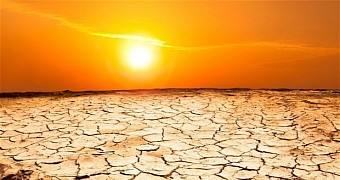Writing in the journal Science Advances, Columbia University experts warn that, as more greenhouse gas emissions enter our planet's atmosphere and climate change continues to progress, the US risks experiencing a serious water crisis.
More precisely, the researchers argue that, by the end of the 21st century, the Western US will likely experience its driest period in 1,000 years. The US Southwest and the Great Plains will not exactly be splashing around in loads of water either.
On the contrary, the scientists say that these other regions also risk being hit by so-called megadroughts that will last 20, maybe 30 or 40 years. Unless greenhouse gas emissions are cut short immediately, the likelihood that such extreme weather events will take their toll on the US stands at 80%.
Using science to predict future droughts
In their study in the journal Science Advances, the Columbia University specialists detail that, as part of this research project, they looked at the history of droughts in North America as told by ancient and more recent tree rings in the US, Mexico and Canada.
Based on this data, the researchers were able to represent past climate and make predictions about how an increase in global temperatures will affect precipitation patterns in North America. This led them to the conclusion that, as climate change progresses, megadroughts are bound to hit the US.
Thus, as mentioned, the scientists expect that, by the end of the 21st century, western, southern and central regions of the US will struggle with severe droughts that will likely last for several decades in a row and that will surely affect local agricultural practices and, consequently, the economy.
What's worrying is that, by the looks of it, droughts are bound to hit the US in the years to come even if the country and other nations reduce their greenhouse gas emissions to a considerable extent. True, they will not be all that severe, but they will affect people and natural ecosystems nonetheless.
How droughts affect people and ecosystems
As it turns out, North America is already struggling with water availability. In fact, researchers say that, of the past 14 years, as many as 11 were drought years in the American West, California, Nevada, Arizona, New Mexico and parts of the Southern Plains included.
Scientists estimate that about 64 million people have until now been directly affected by these drought years. This is because, during drought years, water use restrictions are imposed and agricultural practices are by no means what some would call fruitful.
“Changes in precipitation, temperature and drought, and the consequences it has for our society, which is critically dependent on our freshwater resources for food, electricity and industry, are likely to be the most immediate climate impacts we experience as a result of greenhouse gas emissions,” says researcher Kevin Anchukaitis.

 14 DAY TRIAL //
14 DAY TRIAL // 